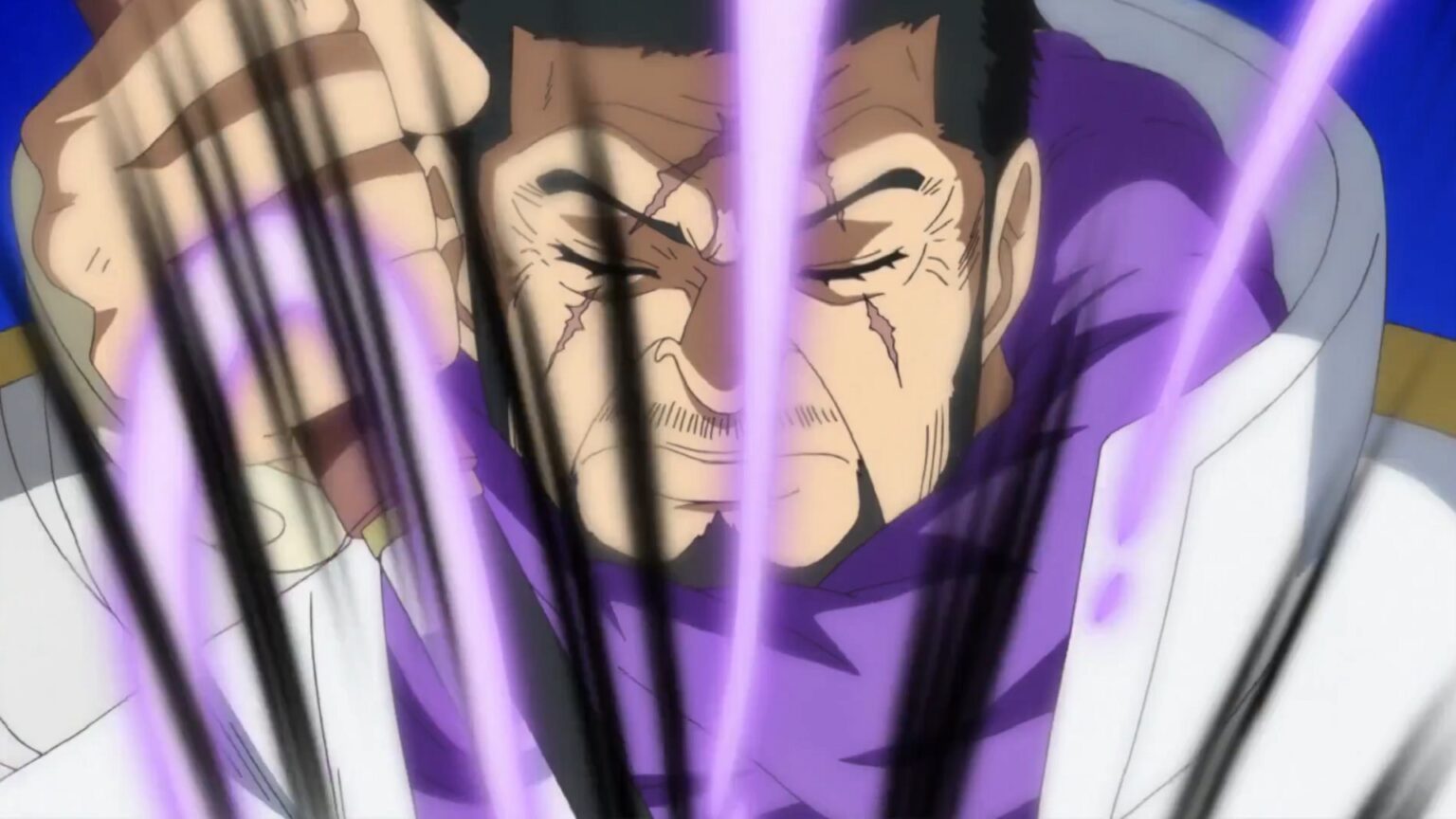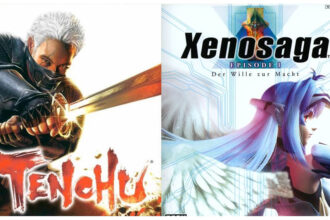A lot of fan favorites were born out of One Piece’s two-year timeskip. One happens to be Admiral Fujitora.
Over the course of the One Piece series and anime, there have been a number of Admirals that have left seats to be filled. Marine officers are among the strongest figures in the One Piece universe for their Haki and masterful use of Devil Fruit. Today, we ask the question: Who is Admiral Fujitora? Is this his actual name? Finally, what makes this Admiral worth discussing in the first place? Let’s take a look.
Fujitora’s Identity and Station
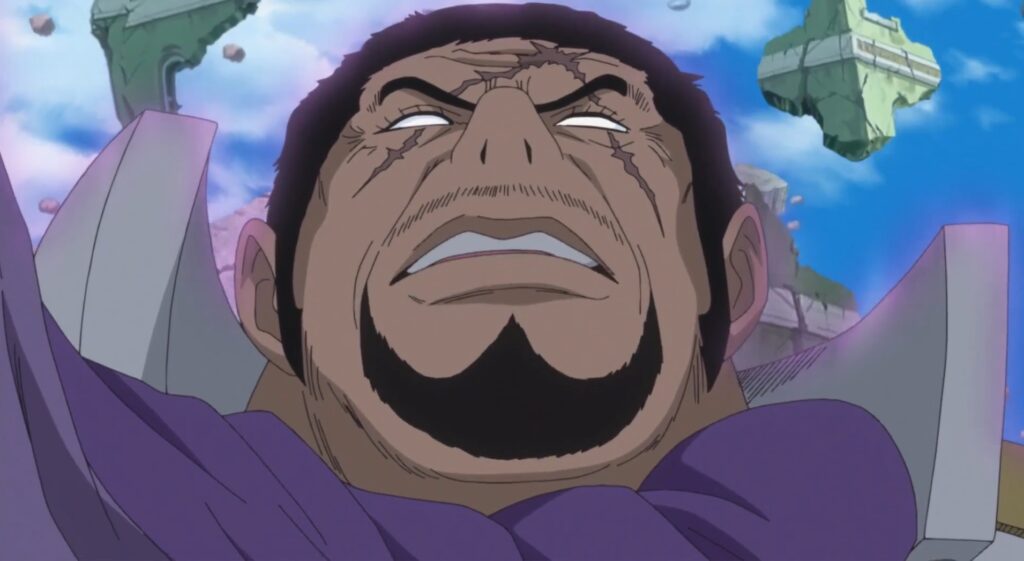
Sakazuki initially brought up Fujitora during a conversation about strategies to handle Monkey D. Luffy and Trafalgar Law on Dressrosa. Fujitora became a part of the World Military Draft during the two-year period between events, ascending to his position (alongside Ryokugyu) in order to fill the vacant admiral roles left by Kuzan’s departure and Sakazuki’s advancement.
Physically, Fujitora’s appearance is distinctive and memorable. He is a blind man, his eyes permanently hidden behind closed eyelids, revealing only the pure whites of his gaze. Also, this unique visual trait underscores his exceptional abilities and enhances his aura of mystique. An X-shaped scar, etched boldly across his forehead’s left side, further contributes to his compelling appearance. Remarkably, this is a self-made scar, an extraordinary choice to embrace his blindness. The symbolism behind this act speaks volumes about his character – his willingness to forsake sight in pursuit of personal conviction.
Admiral Fujitora’s Personality in One Piece
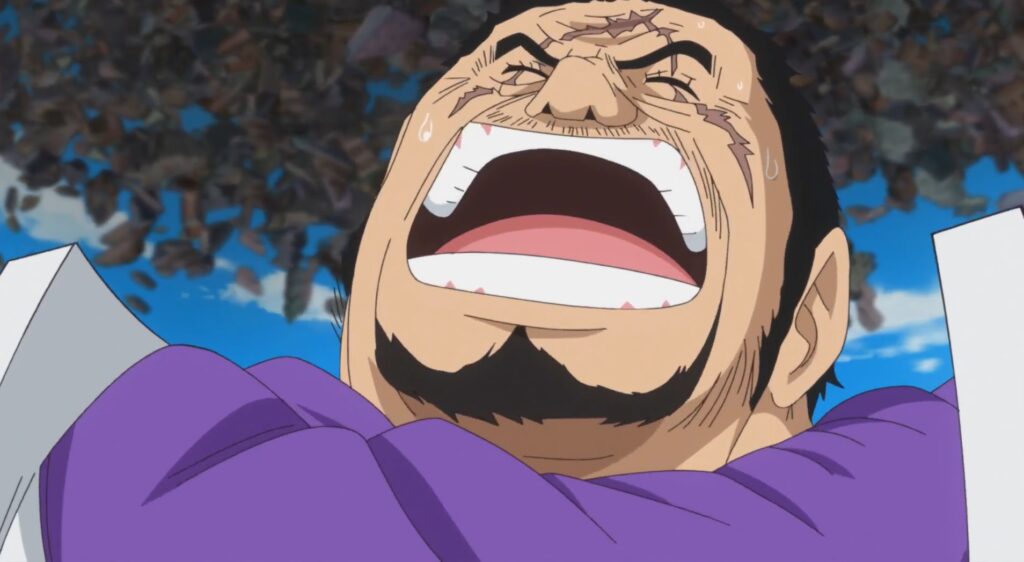
Beneath his intriguing exterior lies a complex personality that resonates with both readers and the world of One Piece. Fujitora is portrayed as a man of justice and principle, unwavering in his commitment to upholding the law. His adherence to justice, however, is not bound by the rigid confines of the World Government’s doctrine. He showcases a distinct brand of morality, challenging the status quo and forcing critical examinations of the established order.
Devil Fruit Abilities
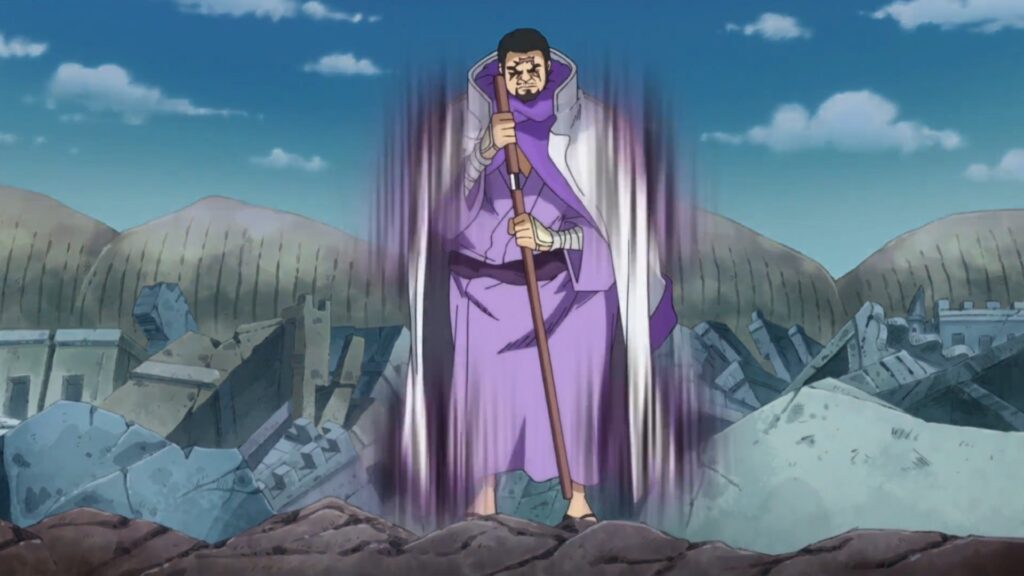
Fujitora’s devil fruit ability, the Zushi Zushi no Mi, grants him command over gravity – an unparalleled power that he wields with both finesse and brute force. This mastery over gravity allows him to manipulate the environment, creating cataclysmic attacks that devastate opponents. This ability mirrors his moral disposition, signifying his capacity to shift the balance of power and challenge the oppressive forces within the world of One Piece.
Despite his formidable prowess, Fujitora exhibits a profound sense of humility. He often questions the implications of his actions and their broader impact on society. His encounters with Monkey D. Luffy and other pirates lead him to reevaluate his role and question the very foundations of justice. This internal conflict showcases his depth as a character, making him more relatable and human in the eyes of the audience.
Fujitora’s Relationship With The Seven Warlords
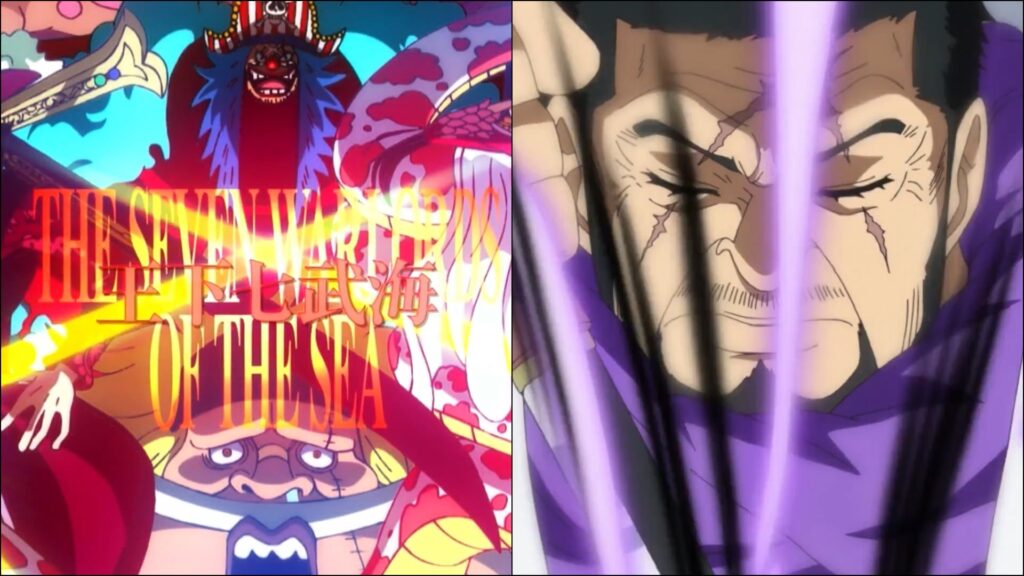
Admiral Fujitora’s relationship with the Seven Warlords of the Sea is one of tension and ideological conflict. Throughout his appearances in the One Piece series, Fujitora challenges the concept of the Warlords, who are pirates granted government-sanctioned status. He views this system as flawed and confronts the Warlords’ perceived impunity.
Fujitora’s actions, such as targeting the Warlord Donquixote Doflamingo during the Dressrosa Arc, reflect his disdain for their privileges and the chaos they often bring. He believes that the Marines should be held accountable for their past decisions. Ultimately, he advocates for a more just and transparent approach. This clash of beliefs leads to friction between Fujitora and the Warlords, highlighting his commitment to redefining justice and dismantling systems that perpetuate corruption and inequality.
What Happened in the Dressrosa Arc?
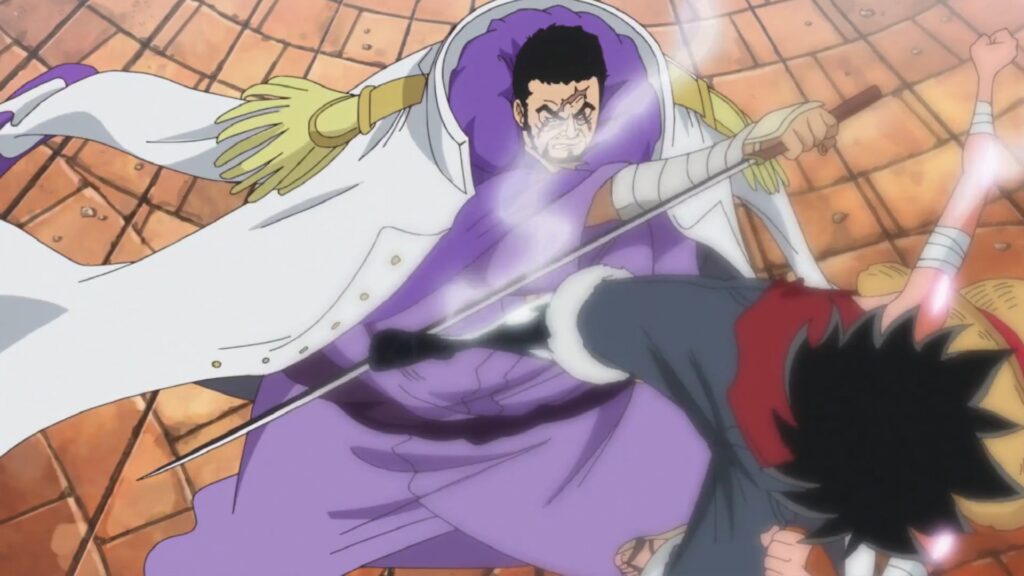
In the Dressrosa Arc of One Piece, Admiral Fujitora emerges as a pivotal and complex figure, contributing to the intricate narrative tapestry woven by Eiichiro Oda. Plus, his arrival on the island ushers in a series of events that challenge the notions of justice and morality within the world. Fujitora’s primary mission in Dressrosa is to address the turmoil ignited by the tyrannical rule of Donquixote Doflamingo. Moreover, as an admiral of the Marines, he embodies justice and aims to restore order to the island. However, his approach diverges from traditional Marine doctrine. Fujitora’s actions are marked by a deep sense of introspection, as he grapples with the unintended consequences of his pursuit of justice. This is an atypical response among those supporting the World Government’s objectives.
Throughout the arc, Fujitora’s interactions with key characters, including Monkey D. Luffy and Trafalgar Law, offer insight into his layered personality. Also, his willingness to question authority and confront his own biases demonstrates his commitment to a more nuanced understanding of right and wrong. His clashes with Doflamingo’s forces, coupled with his gravity-based Devil Fruit powers, showcase his formidable combat skills.
Fujitora’s presence also underscores the theme of accountability. Plus, he acknowledges the World Government’s past mistakes and is resolute in his stance that the Marines must take responsibility for their actions. Lastly, his decision to dismantle the Shichibukai system – which grants pirates special privileges – exemplifies his dedication to reform and justice. One could argue that he’s the purest that represents what a governing body should be.
Admiral Fujitora’s Place in One Piece
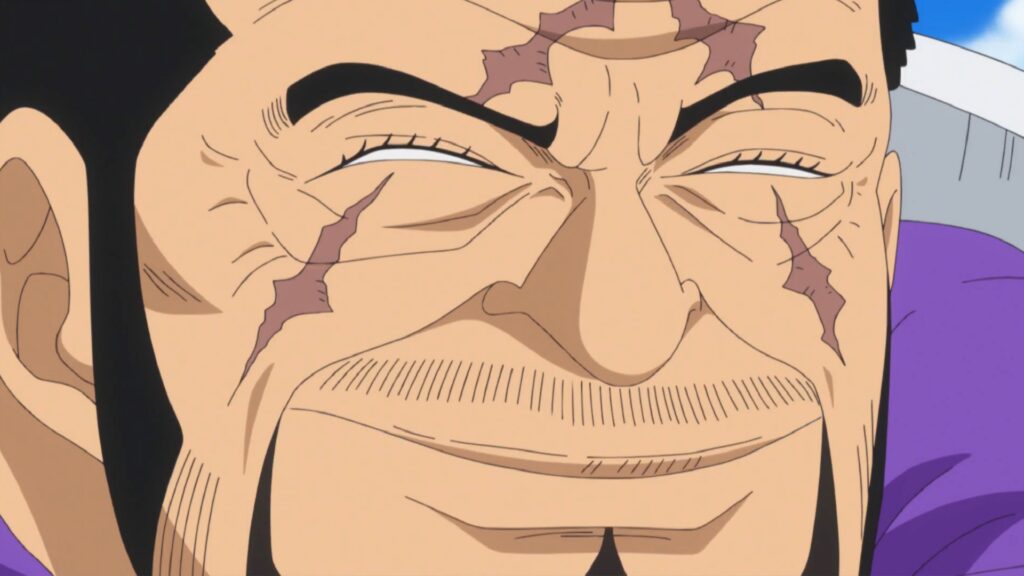
In a world brimming with larger-than-life characters, Admiral Fujitora stands out as an emblem of nuance, morality, and strength. Also, his utmost objective revolves around safeguarding individuals. He conveys to his subordinates the significance of prioritizing the count of lives shielded over the count of adversaries opposed. Even when collateral damage occurs, he diligently ensures reparation for the affected property’s owner. He meticulously avoids endangering innocent civilians in confrontations and strives to minimize unintended harm from his assaults. Conclusively, his blindness serves as both a metaphorical and literal representation of his vision – one that extends beyond physical sight and delves into the realm of truth and justice.
In this, Oda’s masterful storytelling has given birth to a character that resonates with readers and enriches the intricate tapestry of One Piece.
